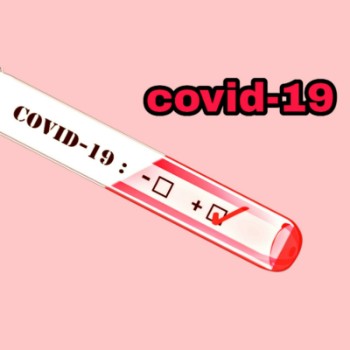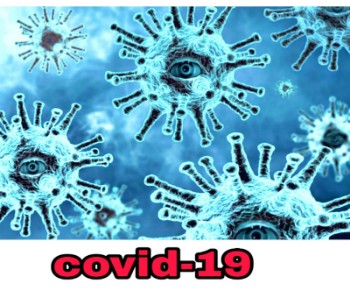 |
| Coronavirus COVID - 19 ? |
What is the New Coronavirus SARS-CoV-2?
In December 2019, cases of pneumonia were identified in China as being caused by a new, previously unknown coronavirus, SARS-CoV-2.
The new coronavirus is named after its related virus, SARS coronavirus. The disease caused by the new coronavirus is called COVID-19, which stands for corona, virus, disease.
Coronaviruses are a large number of viruses that have been found in both humans and animals. 229E, HKU1, NL63 and OC43 are common in humans. They usually cause a mild respiratory infection.
Serious, even fatal infections have been caused
SARS stands for Severe Acute Respiratory Syndrome and
Middle East Respiratory Syndrome Coronaviruses
MERS Coronavirus
SARS-CoV-2, a new coronavirus
How does the new coronavirus become infected?
The new coronavirus is primarily transmitted as a droplet infection when a person coughs or sneezes. The virus can also be transmitted through contact with surfaces that have recently been exposed to respiratory secretions.
Laboratory studies have shown that the virus can remain on the surface for a few hours to a few days. However, the current contribution of the surfaces to the spread of the virus is not significant. So far, no infections by surfaces, food or goods have been detected.
What is the incubation time for the new coronavirus disease (COVID-19)?
The incubation period is called the time from the start of infection to the first symptoms. The incubation period of the disease is estimated to be 1-14 days, with an average of 4-5 days.
According to new studies, the patient may be infected before the onset of symptoms. The virus infectivity number (R0) is estimated to be 2-3. This means that one infected person can infect 2-3 people.
 |
| Coronavirus COVID - 19 ? |
Where does the new coronavirus come from?
The new coronavirus, SARS-CoV-2, is a lineage closely related to SARS coronavirus and Coronaviruses found in bats.
The new coronavirus is probably the result of a single infection that has occurred between an animal and a human. Another theory is that the virus has been transmitted from animals to humans for some time, and there have been more infections. After that, the virus has started to spread from one person to another.
How to prevent the new coronavirus?
In everyday life, you can prevent infection by taking care of hand hygiene and avoiding social contact.
How would you protect yourself and others from infection?
Wash your hands with sanitizer, soap and water for at least 20 seconds. Wash your hands particularly when you come in, after a can visit, or when you have sneezed, coughed or sneezed
If water and soap are not available, use an alcoholic hand rinse.
Change your home towels frequently and use disposable towels outside the home.
Do not touch your eyes, nose and mouth unless you have just washed your hands.
If you have mild symptoms of respiratory infection, stay home.
Avoid handshaking.
Protect your mouth and nose with a disposable handkerchief when coughing or sneezing. Immediately litter the used handkerchief.
If you do not have a handkerchief, cough or sneeze at the top of your blouse, do not hold your hands.
When travelling outdoors, keep at least one meter away from others and avoid unnecessary public places
Do not participate in group activities, events or events for more than 10 individuals.
Do telework where possible.
Do not visit hospitals, nursing homes, nursing homes or homes for the elderly.
What are the symptoms of a new coronavirus?
The new coronavirus causes a sudden respiratory infection. Many sufferers have had mild symptoms, however, some have been seriously ill. In addition, many people with more serious symptoms have had underlying conditions such as diabetes, cardiovascular disease, or lung disease.
The picture of the disease has been covered
fever
cough
shortness of breath
muscle pain
fatigue.
How Serious Is COVID-19?
Of the COVID-19 patients reported to date, approx
In 80% of the cases, the symptoms were mild and the patients recovered
14% had more severe disease with symptoms of pneumonia and/or dyspnoea
At 6%, the condition has been critical.
Major cases of serious illness and death have been reported in people over 70 years of age with pre-existing conditions such as diabetes, high blood pressure or cardiovascular disease. The highest risk is for people over 80 years of age.
In children and adolescents, the disease has been little detected and the symptoms have been mild. Only about 2% of all reported cases were observed in people under 19 years of age. In a very small number of young people, the disease has been severe.
It is difficult to estimate mortality rates. Not all asymptomatic and mild cases may have been observed and reported.
Comparison of mortality rates between countries can give a misleading picture of what the actual mortality rate is now or will be as the epidemic progresses. Currently, the World Health Organization estimates the mortality rate at 2-3%.
How to detect a new coronavirus?
Infection by the new coronavirus is detected by detecting the virus in a respiratory secretion sample by gene amplification (PCR).
New coronaviruses can also be cultured in specialized virus laboratories.
How are new coronavirus infections treated?
Treatment is symptomatic. Depending on the picture, the disease is treated either at home or, if necessary, in a hospital. There is no drug treatment or vaccine against the new coronavirus.


0 Comments:
For more information please comment